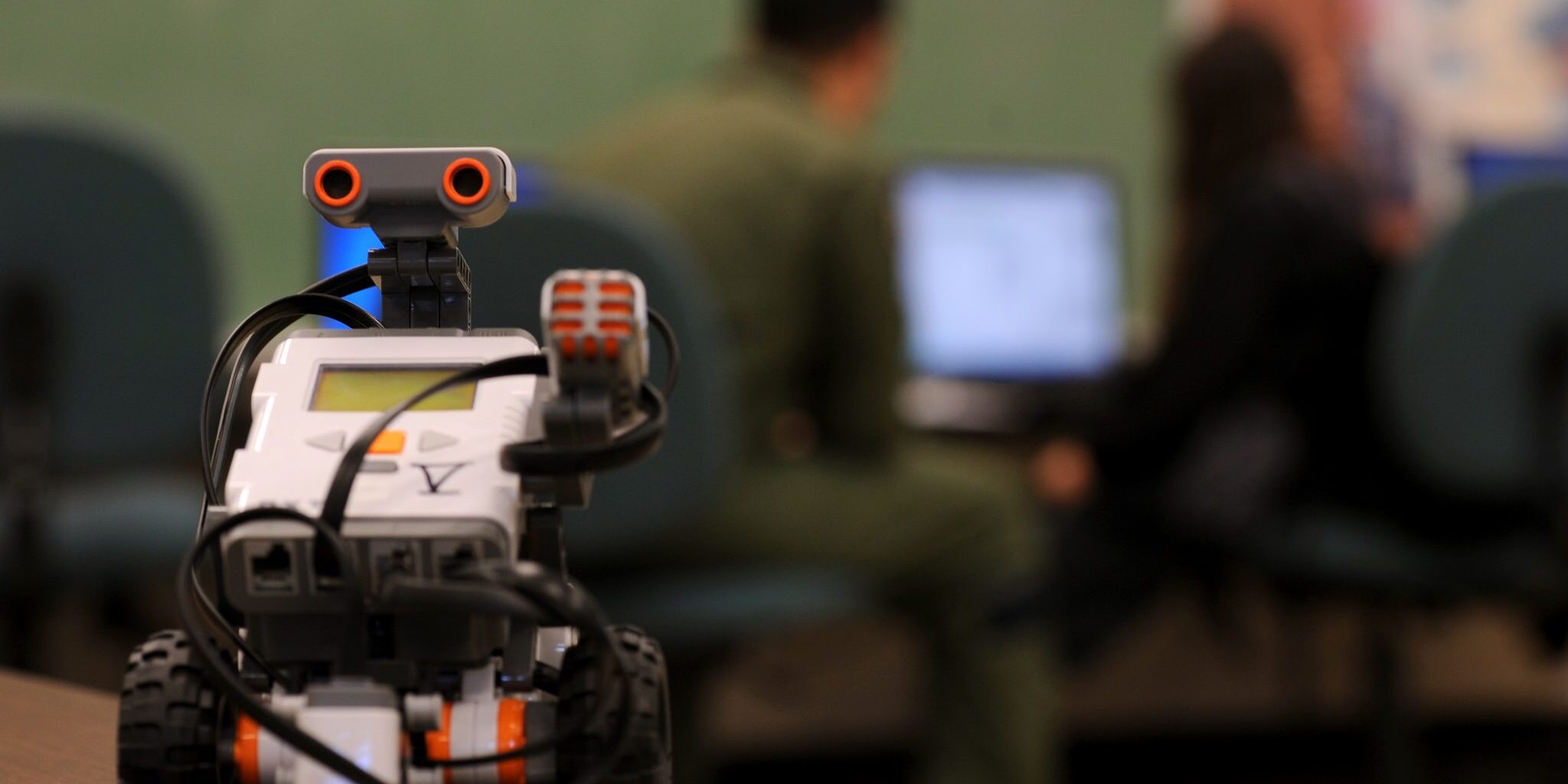There are more than 1500 programming langauges on the planet, which is dreadfully numerous to learn.
Here are the ten most mainstream programming languages in mechanical technology right now. On the off chance that your #1 language isn’t on the rundown, kindly inform everybody concerning it in the remarks! Every language enjoys various benefits for robotics. The manner in which I have requested them is generally arranged by significance from least to generally important.
10.Pascal
Pascal was one of the main programming dialects that I at any point learned. Nonetheless, that is not why I’ve included it here. It is the reason for a few of the mechanical robot dialects (see number 8 beneath). Thus, it’s anything but’s a decent beginning stage in the event that you will be customizing mechanical robots.
Pascal is a fundamental language (in a real sense dependent on the language BASIC) and was intended to empower great programming rehearses.
Nowadays, Pascal is too obsolete to possibly be useful for ordinary use. In any case, it very well may be valuable in the event that you need to get comfortable with other modern robot dialects without getting attached to one specific robot brand.
9. Scratch
A pristine passage to this rundown, Scratch is utilized by a great many maturing roboticists all throughout the planet consistently. This visual programming language is uniquely intended for new software engineers — focused on at clients matured 8 to 16 — and is frequently the language of decision in school innovation classes and mechanical technology clubs.
Scratch writing computer programs is accomplished by hauling around blocks and associating them together. “In the engine” it is written in a blend of Squeak (a lingo of Smalltalk), ActionScript and Javascript.
Despite the fact that you’re likely not going to compose any modern robot programs in Scratch, it’s an unfathomably decent and well known language for complete fledglings and is making ready for large numbers of our future mechanical technology engineers.
8. Mechanical Robot Languages
Pretty much every robot producer has fostered their own exclusive robot programming language, which has for some time been one of the issues in modern advanced mechanics. You can get comfortable with a few of them by learning Pascal. Nonetheless, you are as yet must get familiar with another dialect each time you begin utilizing another robot brand.
ABB has its RAPID programming language. Kuka has KRL (Kuka Robot Language). Comau utilizes PDL2, Yaskawa utilizes INFORM and Kawasaki utilizes AS. Then, at that point, Fanuc robots use Karel, Stäubli robots use VAL3 and Universal Robots use URScript.
Lately, more broadly useful programming alternatives like ROS Industrial, producer rationalist disconnected programming, and hand directing have begun to give more normalized choices to developers. Be that as it may, in the event that you are an expert, you are even bound to need to utilize the producer’s language.
7. Stutter and Prolog
Man-made consciousness (AI) has truly been acquiring in fame as of late. This implies that AI programming languages like LISP and Prolog are beginning to advance once again into individuals’ customizing tool stash.
Stutter is the world’s second most seasoned programming language (FORTRAN is more established, however simply by one year). Portions of ROS (the Robot Operating System) are written in LISP, despite the fact that you don’t have to realize it to utilize ROS.
Prolog is a rationale programming language and permits software engineers to address “information” in a structure that an AI calculation can comprehend. Prolog was utilized as a component of the programming in IBM’s Watson AI.
It is likewise conceivable to program computerized reasoning utilizing a portion of different dialects on this rundown and more that are not recorded. In any case, LISP and Prolog stay at the center of some AI executions and unquestionably merit their place on this rundown. It’s likewise worth recollecting that mechanical technology and AI are not exactly the same thing.
6. Equipment Description Languages (HDLs)
Equipment Description Languages are fundamentally a programming method of portraying hardware. These dialects will be recognizable to electronic architects who make the low-level gadgets of robots.
HDLs are ordinarily used to program Field Programmable Gate Arrays (FPGAs). These gadgets permit you to foster electronic equipment without having to really create a silicon chip, which makes them a faster and simpler choice for some improvement undertakings.
On the off chance that you don’t make models of automated hardware in your work, you may never utilize HDLs. All things considered, realize that they exist as they are very not quite the same as other programming dialects. For a certain something, all activities are done in equal, as opposed to consecutively similarly as with processor-based dialects.
5. MATLAB
MATLAB (and its open-source family members like Octave) is exceptionally well known for certain automated architects for examining information and creating control frameworks. It is utilized broadly in examination and information handling. It’s additionally utilized widely in some college courses.
For mechanical technology, there is additionally an exceptionally mainstream Robotics Toolbox for MATLAB. I know individuals who have created whole advanced mechanics frameworks utilizing MATLAB alone. In the event that you need to examine information, produce progressed charts or execute control frameworks, you will likely need to learn MATLAB.
4. C#/.NET
C# is a restrictive programming language given by Microsoft. I incorporate C#/.NET here for two reasons:
It is the essential language of the Microsoft Robotics Developer Studio. In the event that you will utilize this framework, you’re likely must utilize C#.
It is utilized as the reason for some Virtual Reality motors, similar to Unity, which are filling in fame at the present time.
C# isn’t the simplest alternative to learn first as it’s anything but an unpredictable language. I would normally suggest learning C/C++ first. Nonetheless, it is positively essential in certain spaces of mechanical technology.
3. Java
In the event that you come to mechanical technology from a software engineering foundation (and numerous individuals do) you will presumably as of now have learned Java first.
As a hardware engineer, I have never gotten Java. I’ve generally favored dialects that considered lower-level programming and more control, similar to C. This is a genuine illustration of how individuals from various controls inside advanced mechanics have distinctive programming inclinations — in light of the fact that I don’t care for it doesn’t mean you shouldn’t.
Like C# and MATLAB, Java is an interpretive language, which implies that it’s anything but accumulated into machine code. Maybe, the Java Virtual Machine deciphers the directions at runtime, permitting you to utilize similar code on various machines.
Java is very famous in certain pieces of advanced mechanics. It’s clearly one of the center dialects of a few present day AIs, including IBM’s Watson and AlphaGo.
2. Python
Python is having some fantastic luck right now. As indicated by insights it is has developed quickly to get one of the top dialects.
One reason for its notoriety in advanced mechanics is presumably that Python (and C++) are the two fundamental programming dialects found in ROS.
The superb focal point of the language is convenience. Numerous individuals concur that it accomplishes this quite well. Python sheds a great deal of the standard things which occupy time in programming, like characterizing and projecting variable sorts. Like Java, it’s anything but a deciphered language.
There are likewise countless free libraries for Python which implies you don’t need to “rehash an already solved problem” when you need to execute some essential usefulness. What’s more, since it permits straightforward ties with C/C++ code, the presentation hefty pieces of the code can be carried out in these dialects to stay away from execution misfortune.
With increasingly more mechanical technology cordial hardware presently supporting Python “out-of-the-container” (for example Raspberry Pi), we are probably going to keep on seeing significantly more Python in mechanical technology.
1. C/C++
At last, we arrive at the Number 1 programming language in advanced mechanics!
Numerous individuals concur that C and C++ are required dialects in advanced mechanics. Why? Since a ton of equipment libraries utilized in mechanical technology utilize one of these dialects. These libraries permit association with low-level equipment, take into account constant execution and are adult programming dialects. Nowadays, you’ll likely utilize C++ more than C, albeit C remaining parts quite possibly the most productive programming dialects accessible.
C/C++ are not as easy to use as, say, Python or MATLAB. It can take a considerable amount longer to carry out a similar usefulness utilizing C and it will require a lot more lines of code. Nonetheless, as advanced mechanics is exceptionally subject to constant execution, C and C++ are presumably the nearest thing that we roboticists have to “a standard language”. This is genuine even regardless of the developing ubiquity of Python.
On the off chance that you remove only one thing from this article…
Numerous individuals have utilized this article to say that they ought to learn C/C++ or Python first.
This end might be valid…
… be that as it may, let me offer you only one piece of guidance:
Realize whichever programming language bodes well for you at the present time.
The main thing is to create your “Programming Mindset”. Learn however many programming dialects as you can. The more you learn, the better you will be at programming. Since I’ve recorded these ten dialects doesn’t imply that you need to gain proficiency with every one of them, or in fact any of them. The main thing is to discover a language that feels normal for you and fits with your mechanical equipment.
Also, on the off chance that you truly need a suggestion…
On the off chance that you should push me for a proposal, I would recommend that you need a language that permits you to foster projects rapidly and effectively, so you can zero in additional on creating usefulness.
Hence, I would suggest learning Python first. This is only my very own assessment. Assuming another dialect bodes well for you, discover that all things considered. Be that as it may, Python is an incredibly direct language to learn and immensely beneficial.








